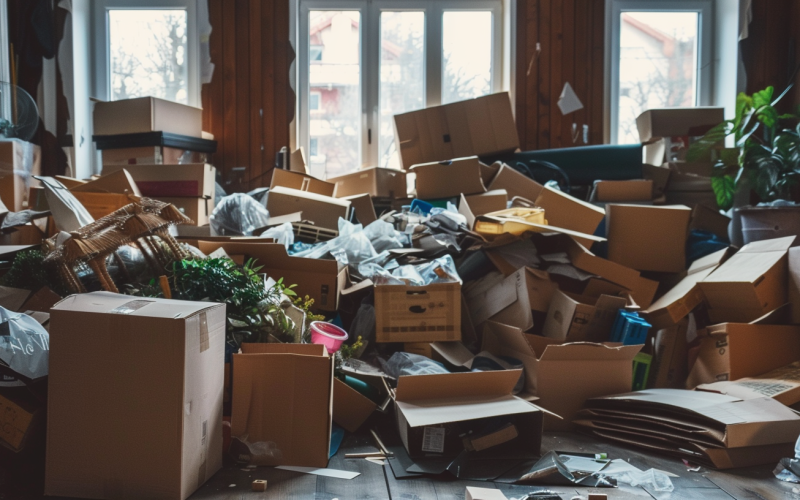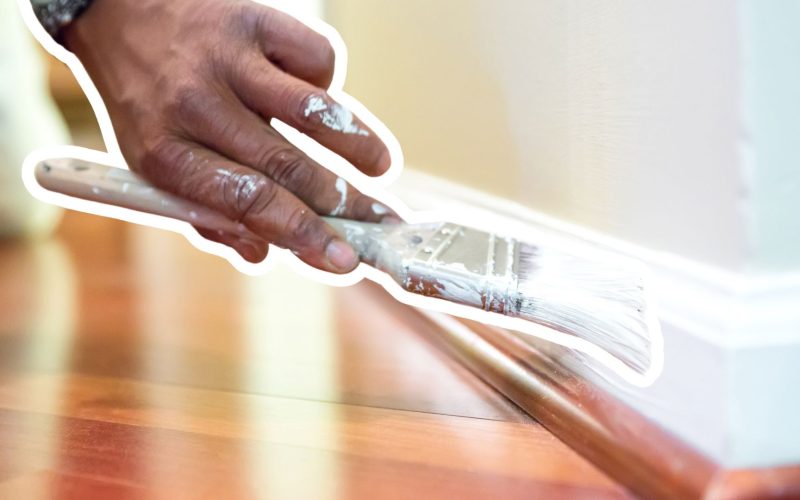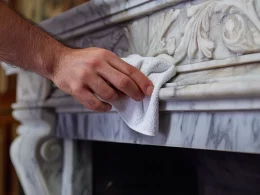9 Ways to Reduce Waste When You Move
Moving is often stressful, expensive, and time-consuming, but it can also be very wasteful. And with over 40 million Americans moving every year, you can imagine the impact all of that waste has on our landfills and the environment.
Luckily, there are some things you can do to not only reduce the amount of waste you create when you move but also reduce the amount of money and time it takes to go from one residence to the next. Some of them may even make the entire experience a little easier overall. We’ve put together a list of some of our favorite tips for reducing waste when you move.
1. Downsize Your Belongings
The best place to start if you want to reduce waste when you move is to get rid of some of your stuff before you move. The less you take with you, the less you waste on packing materials. This is also the perfect chance to declutter, so you can start fresh in your new place.
But here’s the catch: Don’t throw it away. If you have decent items you’re ready to part with, you have several options. For example, you can hold a garage sale. Not only will this help your belongings find a new home where they will be more useful, but it might help you make some extra cash. If you don’t have time for that, donate your items to charity. That way, you’ll help someone else, and you may even be eligible for a tax deduction when you donate to organizations like Goodwill.
2. Use Items You Already Have on Hand for Packing
Now that you’ve downsized and decluttered, it’s time to start packing. Before you turn to boxes, look at what you have around your home. Use your own containers first. Suitcases, duffel bags, backpacks, food storage containers, baskets, drawers, large pots, decorative containers, crates, totes — if they will hold some items, put them to good use. Once you arrive at your new destination, you have nothing to throw away. Plus, you may even save space in your car or the moving van.
And rather than running out and buying bubble wrap and packing peanuts, use items like towels, blankets, and clothing to wrap your breakables. You can also use old newspapers and magazines that you planned to recycle anyway.
3. Reuse Boxes and Other Packing Supplies
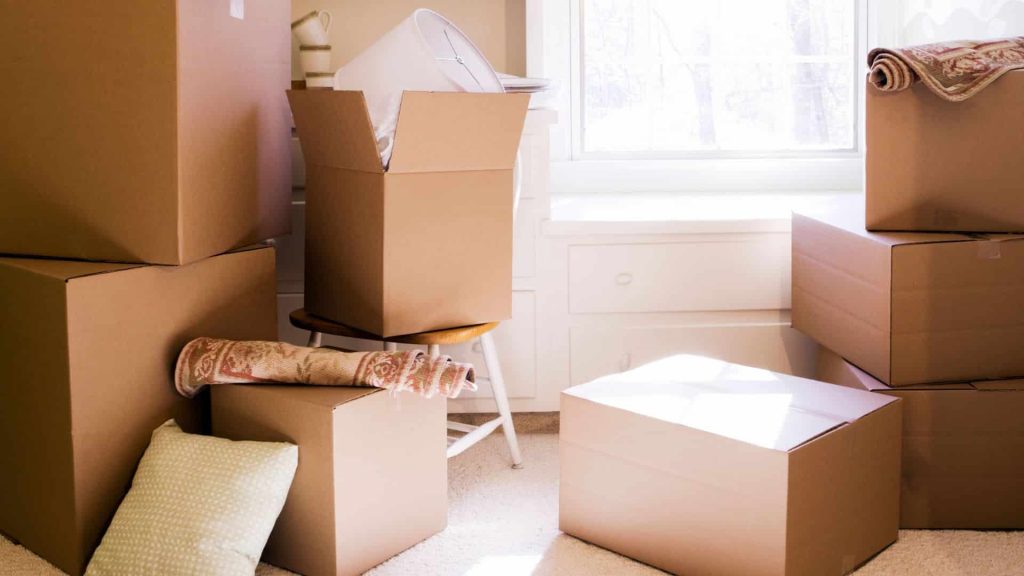
If you’re going to need to use boxes anyway, and you have some time to plan ahead, start saving all of the boxes you get from deliveries. Every time Amazon drops something off at your door, keep the box and any packing materials, like air cushions or bubble wrap, that arrive with it. When the time comes, reuse them for your move to give them a second life.
4. If You Do Have to Buy Packing Supplies, Buy Green Ones
If you’re moving a large amount of stuff, you’ll probably find that you will have to buy some packing supplies, and that’s okay, but pay attention to the labels. Look for green items that are easy to recycle or have been made from recyclable materials. For example, instead of buying traditional packing peanuts made from Styrofoam, you can find some on the market that are made from 100% biodegradable materials.
5. Share Your Supplies With a Friend or Neighbor
Another way to reduce waste is to share your materials. Maybe you have a friend or family member who is moving soon too. Perhaps a neighbor can use the boxes for a home business venture.
A local art teacher might need them for a project. Always ask around before throwing your supplies away to see if someone in your inner circle or community can use them. You can even check websites like Freecycle that allow you to give unwanted items away to people who might need them.
6. Use Other Materials Besides Tape for Securing Items
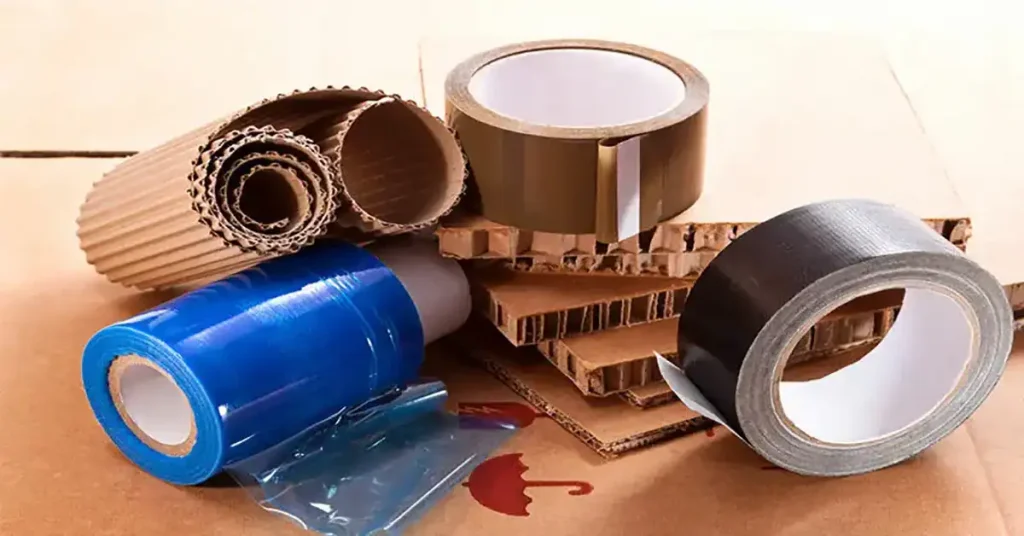
Using tape for your move can create a good bit of waste. Most plastic tape isn’t even recyclable. Instead of using tape, opt for boxes with flaps that you can fold together so they stay closed. Use string if necessary, or, if it’s in your budget, buy containers with lids that you can reuse for storage at your new home.
7. Dispose of Hazardous Materials Properly
When you’re tossing out items you don’t need, make sure you dispose of hazardous household items properly. If you simply throw them in the trash, you’re not just creating more waste, you’re creating a potential environmental hazard.
The Environmental Protection Agency (EPA) suggests taking special care to get rid of household cleansers, paint, batteries, pesticides, and anything else considered hazardous waste. Read labels for proper disposal instructions, and find out if there are places in your community where you can take items like batteries for recycling.
8. Have New Items Delivered to Your New Home

Are you planning to buy a new TV or order some new clothes in the weeks leading up to your move? If so, have them sent to your new place rather than your current one, if it’s feasible. This way, you don’t have to worry about repacking and moving that item. You can simply open it up when it arrives and start using it.
9. Recycle Anything You Can at the End of Your Move
Finally, no matter what kind of containers or packing materials you use, recycle as much as you can when your move is complete. Don’t just toss them in the trash. Many cities have places that collect plastics and cardboard for recycling.
Reducing waste when you move may take a little extra effort, but it may save you time and money in the long run. Best of all, you’ll feel better about your impact on the planet.





